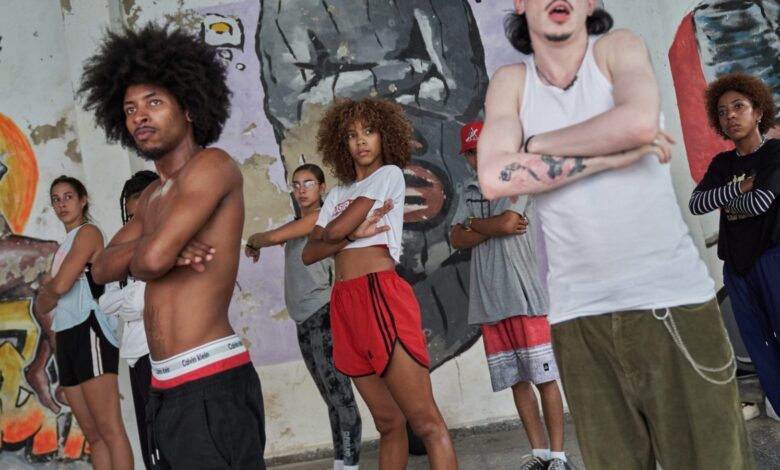Cuba’s internet restrictions create challenges for creators

[ad_1]
In late December, half a dozen members of the Cuban dance troupe Los Datway gyrated and twirled to a reggaeton song in a colonial tenement house in central Havana, an iPhone pointed at them as they rehearsed their choreography. Since Los Datway posted a video paying homage to Argentina after the South American nation won the World Cup in 2022, the group’s Instagram account has amassed over 40,000 followers and attracted international coverage from outlets like Mexico’s La Jornada and French-Congolese site Africanews.

Although the attention has translated to advertising deals with local shops and choreographing gigs with other artists, Los Datway has struggled to make money directly from digital platforms while in Cuba, home to the world’s slowest internet. Online payment services like PayPal and Stripe are banned in the country as part of the U.S. commercial embargo, and Instagram and YouTube monetization features are unavailable for local creators.

Los Datway was born in 2016 when Darién López, a backup dancer for the popular Cuban reggaeton duo Yomil y El Dany, recruited two friends to practice moves in the neighborhood. “I had social media accounts but couldn’t use them because I had no phone,” López, who goes by Chaiky, told Rest of World. Instead, he used a friend’s phone to start posting photos and videos of their dance routines online.

“Sometimes an entire day passes by and we can’t publish our content.”
Darién “Chaiky” López • Los Datway dancer

It would take López a full night and a trip to downtown Havana, where the chances of getting a clear signal were better, to upload a video. Even then, it might happen that “a whole day goes by and the video doesn’t get published,” he added.

After winning a dancing challenge by Dominican singer Ozuna and Cuban rapper Ovi in 2021, Los Datway started adding more members to its troupe, which is now made up of 18 dancers and four producers. But there is high turnover. “Some of our dancers are no longer in Cuba,” said López. With 117,000 Instagram followers of his own, López has partnered with local apparel shops to promote their clothing in his videos.



Because online payments from U.S. companies are not available in Cuba, members of Los Datway cannot pay to promote their Instagram account from the island. Instead, they focus on improving the quality of their videos in order to increase their visibility abroad. “It’s a bit harder for us to access the newest” phones, Christian Anderson Delis Guerra, a 23-year-old Los Datway dancer, told Rest of World.
Apple products are unofficially sold and resold on the island, but procuring, operating, and maintaining one can still be a challenge. Basic tools to repair phone screens require an import permit, downloading apps or software updates is complicated because Cuban IP addresses are blocked, and setting up a new Apple ID with two-factor verification requires a non-Cuban phone number.

Monetizing platforms is also a challenge. In most parts of the world, YouTube pays creators about $0.018 per ad view after they hit 1,000 followers and join the platform’s partner program, according to Influencer Marketing Hub, a Copenhagen-based company that specializes in research around the social media and influencer marketing industry. But those monetization tools are disabled in Cuba.

For Los Datway and other artists on the island to make money off their content, they need someone living abroad to provide a foreign address to the platform, receive payment, and wire it back to Cuba. “It’s complicated to actually receive the money,” Zamir Muñoz Hernández, a creator with thousands of views on YouTube, told Rest of World.

“It’s complicated to actually receive the money.”
Zamir Adalberto Muñoz Hernández • online creator
The challenges for artists on the island go beyond monetization. Los Datway dancers have to download songs onto their phones to avoid interruptions when practicing their routines. But buying songs, or any digital product, is a hassle, as digital payment systems like Stripe don’t operate in Cuba.

If the dancers want to buy a song from Spotify or YouTube, Cubans are unable to pay for it, Antonio Ramírez Romero, a DJ who goes by ToonAi and works with Los Datway, told Rest of World. Like many others in the country, Los Datway dancers stream and download music through tools like Telegram links, where they find pirated versions of the songs, or Snaptube, a Chinese-based app that rips music files from YouTube videos and allows users to keep the audio files on their phones.

To avoid copyright restrictions, Los Datway dancers use remixed songs. “We have to make our own remixes or special editions so Instagram doesn’t remove our songs,” Ramírez Romero told Rest of World. He said the platform blocks videos that violate geographical restrictions, so ToonAi is meticulous.

A Meta spokesperson did not respond to questions from Rest of World. Instead, they sent a link to an Instagram page that states the terms of use of the platform’s licensed music library. “Meta is obligated to uphold our agreements with the rights holders of the music that’s available in our licensed music library,” it states. “Licensed music may also not be available in certain countries or regions.”

Los Datway’s fame has been a slow burn. Its members believe that if social media removed restrictions for people in Cuba, their popularity would explode. “One of our latest videos has over 272,000 plays. If Instagram features worked well in Cuba, we could easily have 500,000,” López told Rest of World.
[ad_2]
Source link







